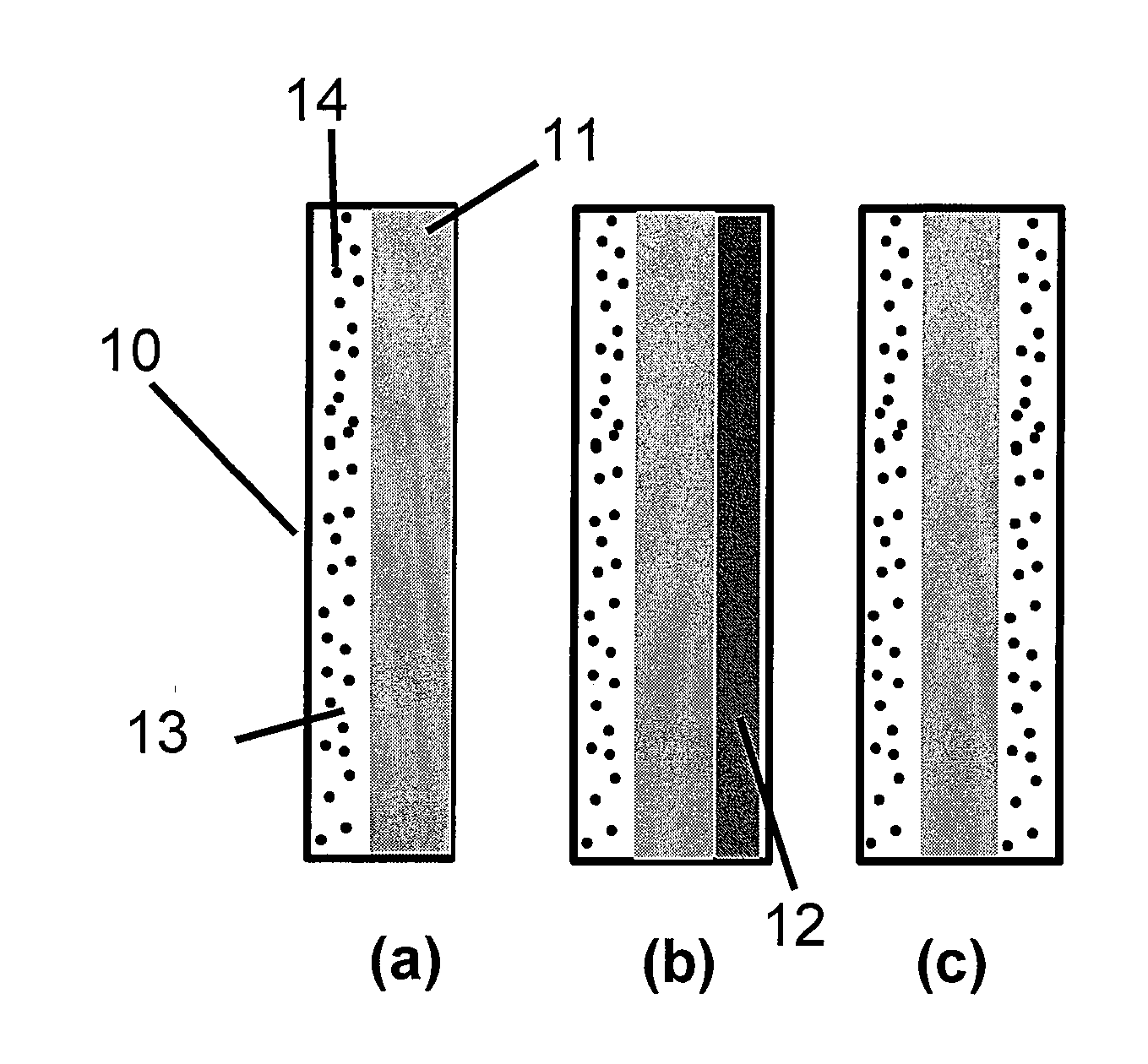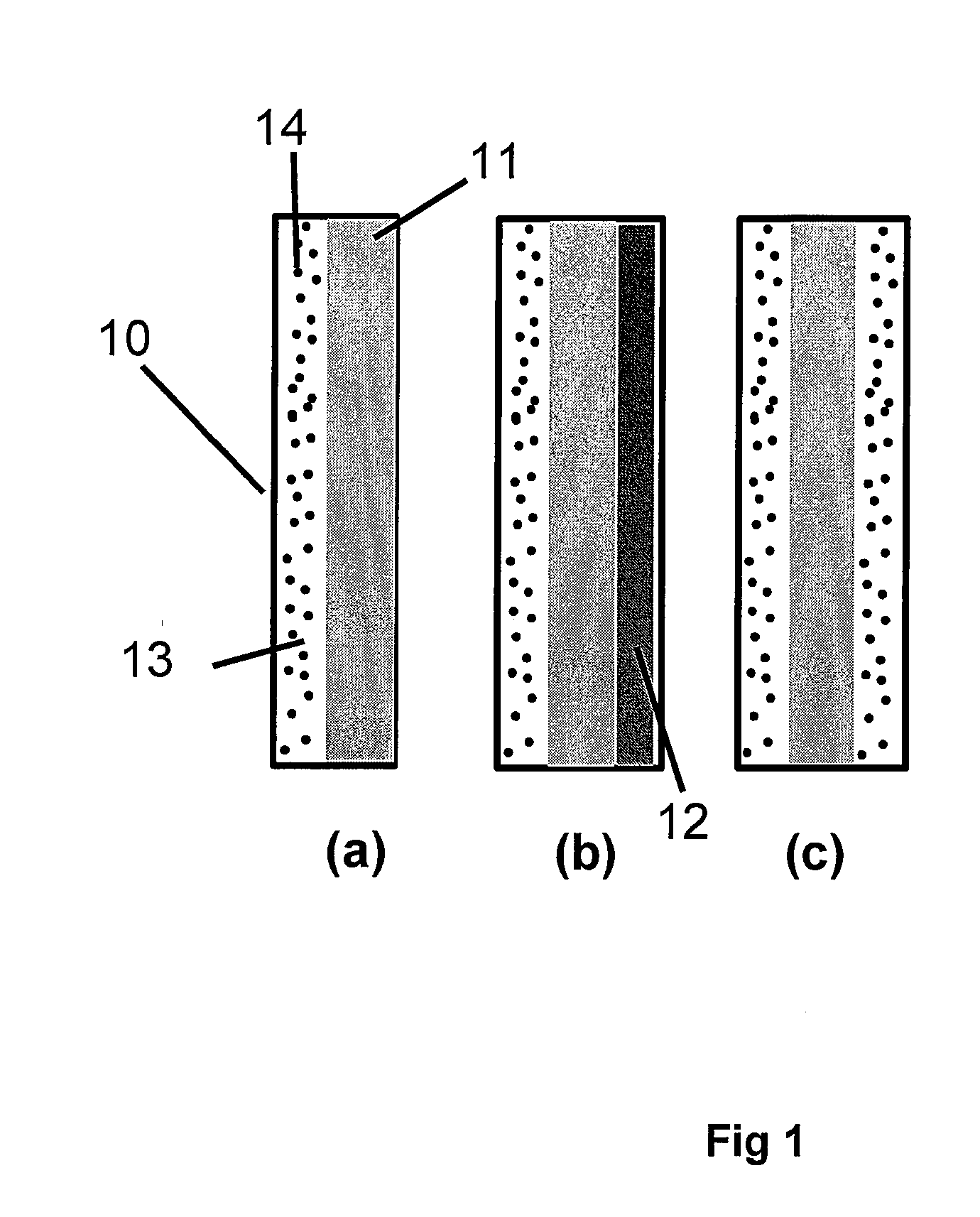Highly Stable Fuel Cell Membranes and Methods of Making Them
a fuel cell membrane, high-stable technology, applied in the direction of sustainable manufacturing/processing, final product manufacturing, electrochemical generators, etc., can solve the problems of increasing the cost of fuel cell membranes. the effect of increasing the durability
- Summary
- Abstract
- Description
- Claims
- Application Information
AI Technical Summary
Benefits of technology
Problems solved by technology
Method used
Image
Examples
example 1
[0089]A Ce containing peroxide decomposition catalyst bound to carbon using polyvinylphosphic acid (PVPA) was prepared as follows. Ketjen Black carbon powder [1.7779 g] that had been previously oven dried and equilibrated to room conditions was placed in a beaker and impregnated with a solution consisting of 7.00 g of a commercial 30% polyvinylphosphonic acid solution plus 2.3 g water. After extensive mixing with a spatula, the solid sample was placed in a muffle furnace and heated in air to 170-200° C. for over 20 minutes, cooled and equilibrated to room conditions, yielding 3.88 g.
[0090]3.77 g of this material was slurried in a solution consisting of Ce(III)(NO3)3 .6 H2O [1.2556 g] dissolved into 20 mL of water and stirred for about 1 hour. The solid was then filtered under vacuum, washed 2 times with water, 1 time with acetone, 2 more times with water, and finally with acetone and dried in air. The sample then was placed in a muffle furnace and heated in air to 170° C. for 20 min...
example 2
[0091]A Ce containing peroxide decomposition catalyst bound to carbon using polyvinylphosphic acid (PVPA) was prepared as follows. 3.56 grams of Ketjen black carbon EC300J which had been dried in an oven overnight at 80 degrees centigrade at a vacuum of 4.3 inches of mercury, then allowed to cool in a covered container, was placed in a beaker. To it was added 14.00 grams of polyvinyl phosphonic acid (Diversitec PVPA-UP, 30.8% in water). The mix was stirred with a glass stirring rod until uniform. To this was added 5.03-g of deionized water and that was again stirred until uniform. The beaker containing the mix was placed in a vacuum oven and baked at 198±2 degrees C. for two hours with slow nitrogen purge. The oven was then evacuated to 1.8 inches of mercury with continuing purge. The resulting slightly agglomerated black powder which weighed 7.5-g was transferred to a 150-ml beaker and 60-ml of 3N nitric acid was added. The mix was heated to approximately 60 degrees centigrade with...
example 3
[0094]A Mn containing peroxide decomposition catalyst bound to carbon using polyvinylphosphic acid (PVPA) was prepared using the same procedure described in Example 2, except Mn(NO3)3.6H2O was substituted for the Ce (NO3)3.6H2O.
[0095](Separately from this Example 3, the inventors also produced catalysts with PVPA and other metals by separately substituting each of the following for the Ce (NO3)3.6H2O of Example 2: Tb(NO3)3.6H2O, Sa(NO3)3.6H2O, Nd(NO3)3.6H2O, Pr(NO3)3.6H2O, and La(NO3)3.6H2O. This produced catalysts containing Mn, Tb, Sa, Nd, Pr, and La, respectively.)
PUM
| Property | Measurement | Unit |
|---|---|---|
| Fraction | aaaaa | aaaaa |
| Current | aaaaa | aaaaa |
| Temperature | aaaaa | aaaaa |
Abstract
Description
Claims
Application Information
 Login to View More
Login to View More - R&D
- Intellectual Property
- Life Sciences
- Materials
- Tech Scout
- Unparalleled Data Quality
- Higher Quality Content
- 60% Fewer Hallucinations
Browse by: Latest US Patents, China's latest patents, Technical Efficacy Thesaurus, Application Domain, Technology Topic, Popular Technical Reports.
© 2025 PatSnap. All rights reserved.Legal|Privacy policy|Modern Slavery Act Transparency Statement|Sitemap|About US| Contact US: help@patsnap.com



